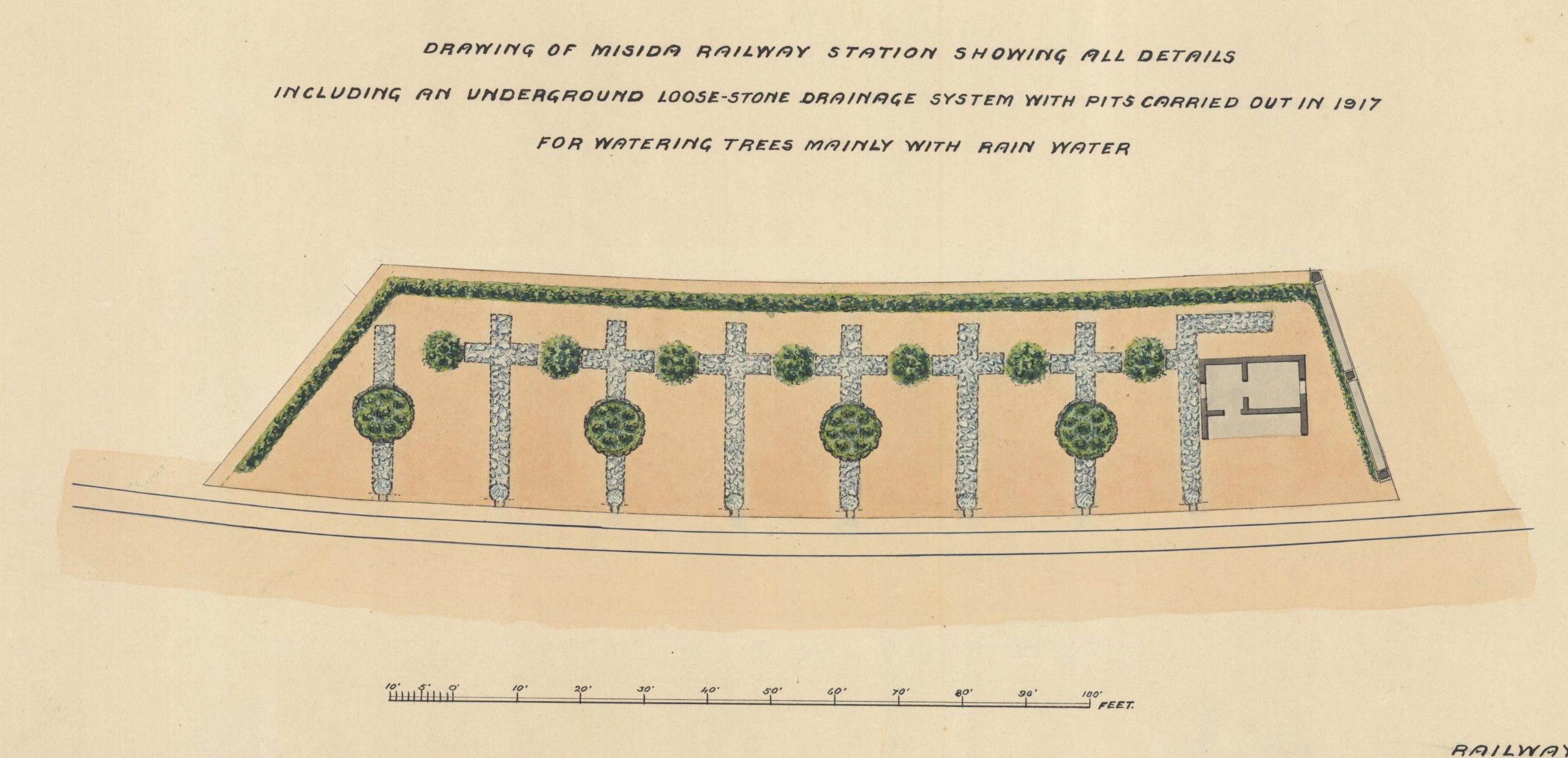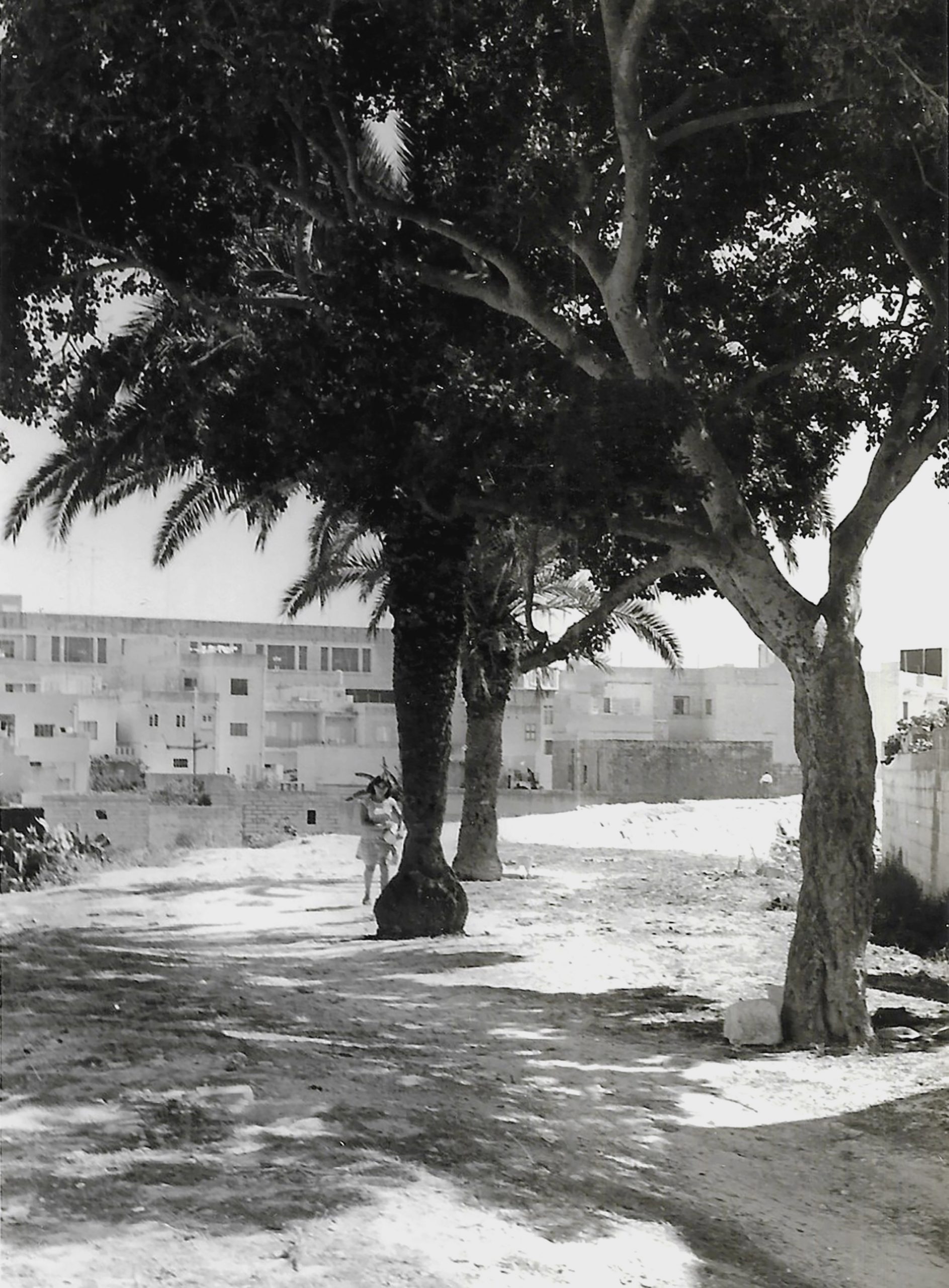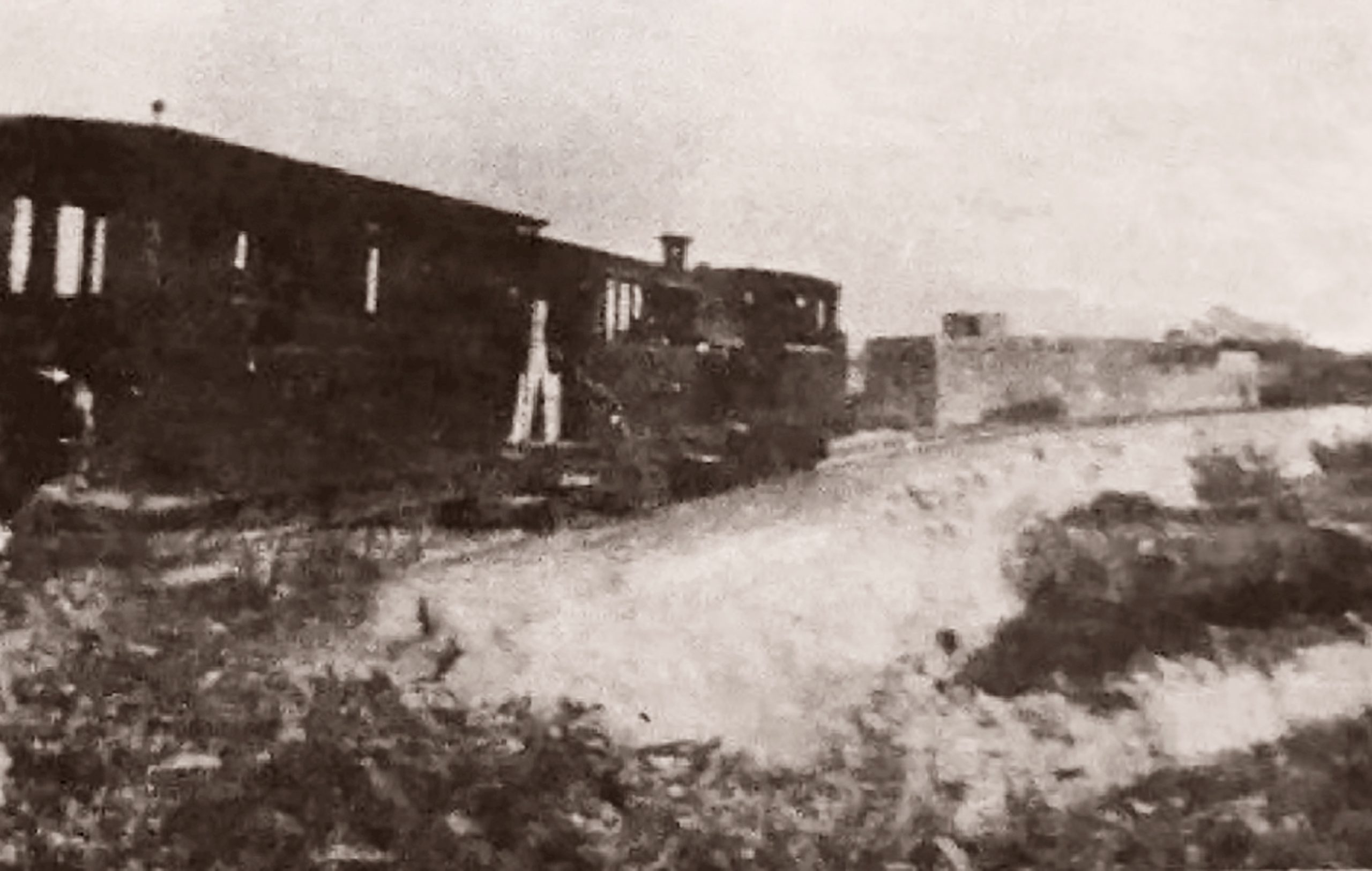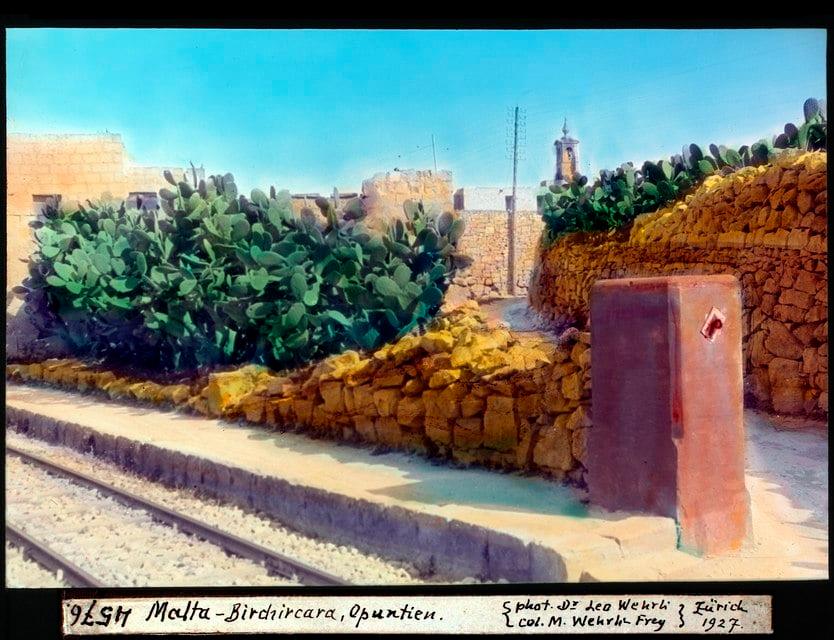Msida
1 mile, 57 chains – Journey time 7 mins
A remote oasis
Msida was the first of the standard ‘intermediate’ stations out of Valletta, effectively halts with few facilities. These were designed with a basic stone building with a metal canopy sheltering a bench for waiting passengers, and a small office with a window for issuing tickets. They also incorporated a guard room for the staff attending to the chains at the level crossings each station was built beside.

The stop was on modern-day Triq Villambrosa, just 600 yards out of Hamrun station on a gentle bend in the line as it sought to follow the line of Msida Valley. It was, even by the standards of the Malta Railway, a long way from the village it purportedly served, right on the boundary with the neighbouring parish. In 1900, when services to some of the less used intermediate stops were temporarily suspended, it was calculated that traffic at Msida averaged 1.1 passengers a day, whilst 5.1 was the figure recorded nearby at the unofficial stop at Guard Hut No.6.
Despite the poor usage of the station hardly warranting any special treatment, it was subject to Nicola Buhagiar’s campaign to green the railway’s stations. By 1917 works had been implemented to irrigate hedging to the railway perimeter, its seven tree pits, and four circular flower beds. The usual weeping fig trees were planted for shade.
Long after the railway closed the palms that took centre stage in the flower beds eventually grew to mammoth scale. They survived the rest of the structures, marking the station’s former location until the 1960s, when the formation of Triq Il-Kappellin Mifsud was aligned along the old trackbed.


Santa Venera
A station by demand
Despite official regulations discouraging the stopping of trains anywhere other than official stations, it was common for trains to pick up passengers elsewhere. Guard huts were the most likely of these locations, that at Port des Bombes being frequented by those who disliked Floriana’s underground station.
Guard hut No.6 was another of these stops, described as an “optional stoppage at the request of passengers at level crossing No.6 where there is no station but only the crossing keepers shelter”. It was close to the village of Santa Venera, then classed as part of Birkirkara. The village was expanding quickly by the end of the 19th Century, and by 1900 more passengers were recorded alighting at level crossing No.6 than at the official stop at Msida less than half a mile away; That it was recognised in statistics gave the stop a degree of official sanction.
At some point there was even investment by the railway in improving facilities, at least as far as constructing a basic narrow stone platform adjacent to the level crossing. Despite clearly being in established use as an intermediate station for decades, it wasn’t until 1926 that Santa Venera was named on official timetables as a stop.

Previous station / Next station
